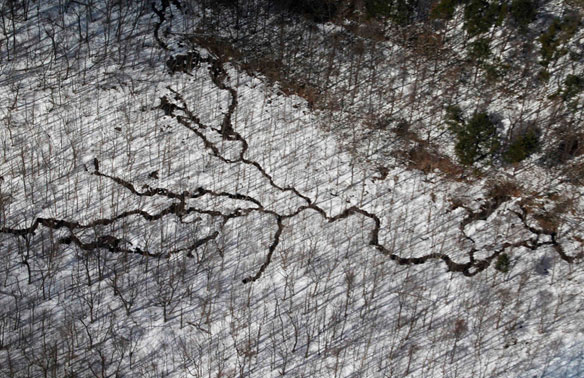By Hiroshi Hiyama, AFP
Japan on Monday widened the evacuation zone around a stricken nuclear plant exactly a month on from a huge natural disaster as another 7.1 magnitude quake and tsunami alert strained nerves anew.
The United States Geological Survey measured the aftershock’s magnitude at 6.6.
The latest aftershock caused buildings to sway in the capital Tokyo, shortly after the nation had observed a minute’s silence.
The US Geological Survey said the onshore quake hit at 5:16 pm (0816 GMT) at a depth of just 13 kilometres (eight miles). Its epicentre was 81 kilometres south of Fukushima city, near the troubled nuclear plant.
Japan’s meteorological agency warned that a one-metre (three foot) wave could hit Ibaraki prefecture, one of the areas pummelled by last month’s massive tsunami, before cancelling the alert less than an hour later.
Workers battling to contain the crisis at the Fukushima-Daiichi nuclear plant were evacuated after the latest quake Monday, which briefly knocked out power to crippled reactors before electricity was restored.
People across the country had paused at 2:46 pm, the moment Japan’s biggest ever recorded earthquake struck, setting off a chain of events that has left workers scrambling to tame runaway atomic reactors at the Fukushima plant.
It was the worst tragedy to envelop the country since World War II.
Prime Minister Naoto Kan promised Sunday he would “never abandon” tsunami survivors as he tried to focus attention on the future, despite the continuing high-stakes battle at the nuclear plant.
Kan, on only his second trip to the disaster zone in the month since the tragedy, said the government would “work as fast as possible” to house the more than 150,000 people still living in emergency shelters.
Underlining the threat of long-term health damage from radiation, the government on Monday said it was to widen the evacuation area around the atomic plant to include some towns outside the current 20-kilometre exclusion zone.
Those areas were liable to receive potentially hazardous radiation levels of 20 millisieverts per year, top government spokesman Yukio Edano said, while stressing there was no deterioration at the Fukushima plant.
Engineers at Fukushima who last week sealed a leak spewing highly contaminated water into the sea have begun installing a “silt curtain” to try to prevent radioactive mud from spreading around the ocean.
But at the same time, plant operator TEPCO is deliberately dumping more than 10,000 tonnes of mildly radioactive water into the ocean to free up urgently needed storage space for highly toxic liquid.
Masataka Shimizu, the president of Tokyo Electric Power Co. (TEPCO), on Monday visited Fukushima and apologised for the atomic emergency engulfing the area.
“I offer my personal apology from the bottom of my heart once again to the people in Fukushima prefecture and residents near the nuclear plant for having imposed such awful physical and mental burdens,” he said.
Shimizu had wanted to go to the offices of the Fukushima prefecture government in the hope of meeting governor Yuhei Sato, but a local official said no meeting had taken place.
The official gave no reason, but Sato has previously refused to meet the boss of the embattled utility.
Proposals to lift the long shadow cast by Japan’s disasters emerged over the weekend.










